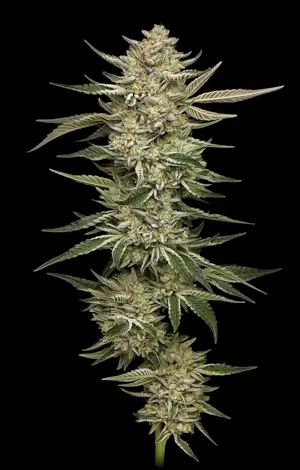What are triploid seeds?
Triploid marijuana seeds come from plants with three sets of chromosomes (3n), unlike traditional diploid plants, which have two (2n). This genetic change prevents triploids from reproducing sexually naturally, preventing them from producing seeds even when exposed to pollen. Therefore, they are considered seeds with a very low fertilization rate.
Advantages of triploid seeds
These seeds offer guaranteed seedless yields, which is ideal for growers looking to maximize the quality of their final product, especially for dried flowers and extractions. Furthermore, since they do not produce pollen, they can coexist with other varieties without the risk of cross-pollination, improving coexistence in mixed crops or areas sensitive to genetic contamination.
Plus, they're taller and sturdier than regular marijuana plants, and they produce larger, denser buds. They also have a higher THC content, which means they produce a more potent effect.
Who are they ideal for?
They're perfect for professional growers, large-scale productions, high-end dried flower projects, or those working in areas with nearby crops that could cause cross-pollination. They're also a great option for those looking for safe, reproductively uncomplicated genetics.
Advantages of growing triploid seeds
These seeds allow you to safely obtain seedless buds even in uncontrolled environments. Their plants have a robust structure, and their resin yield is remarkable, making them ideal for extractions. They also tend to have a greater expression of terpenes and cannabinoids thanks to the fact that the plant does not invest energy in seed production, which translates into higher final quality.
Banks that offer triploid seeds
Although it is an emerging technology, there are already seed banks that are investing in this type of genetics, standing out for their innovation and stability:
- Humboldt Seed Company is a pioneer in the commercial development of triploids with stable and highly productive varieties.
- Grower's Choice is one of the first banks in Europe to introduce triploids focused on seedless flowers.






